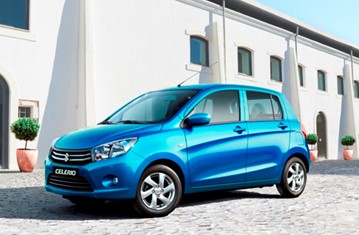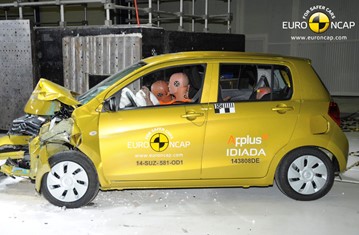Find more information in the General Comments section of the assessment
Find more information in the Rating Validity tab of the assessment
- See More
- See More
- See More
- See More
- Good
- Adequate
- Marginal
- Weak
- Poor
 Passenger
Passenger
 Driver
Driver
 Rear Seat
Rear Seat
 Front Seat
Front Seat
 Car
Car
 Pole
Pole
- Good
- Adequate
- Marginal
- Weak
- Poor


Passenger
outboard
center
Fitted to the vehicle as standard
Not fitted to the test vehicle but available as option
Not Available
-
Infants up to 13 kg
-
Infants and toddlers up to 18 kg
-
Toddlers from 9 to 18 kg
-
Toddlers over 18 kg
Easy
Difficult
Safety critical
Not allowed
| Seat Position | ||||
|---|---|---|---|---|
| Front | 2nd row | |||
| Passenger | Left | center | Right | |
| Maxi Cosi Cabriofix (Belt) | ||||
| Britax Römer King Plus (Belt) | ||||
| Britax Römer Duo Plus (ISOFIX) | ||||
| Britax Römer KidFix (Belt) | ||||
| Maxi Cosi Cabriofix & EasyFix (Belt) | ||||
| Maxi Cosi Cabriofix & EasyFix (ISOFIX) | ||||
| BeSafe iZi Kid X3 ISOfix (ISOFIX) | ||||
| Maxi Cosi Pearl & Familyfix (ISOFIX) | ||||
| Britax Römer KidFix (ISOFIX) | ||||
Easy
Difficult
Safety critical
Not allowed
Based on dummy readings from the dynamic tests, maximum points were scored for protection of the 1½ year dummy, sat in a rearward-facing restraint. Forward movement of the head of the 3 year dummy, sat in a forward-facing restraint, was not excessive. However, forces measured in the neck and chest indicated poor protection of these areas and the deceleration of the head showed marginal protection. The front passenger airbag can be disabled to allow a rearward-facing child restraint to be used in that seating position. Clear information is provided to the driver regarding the status of the airbag and the system was rewarded. All of the restraints for which the car is designed could be properly installed and accommodated in the vehicle.
- Good
- Adequate
- Marginal
- Weak
- Poor

Head Impact 18.1 Pts
Pelvis Impact 0.8 Pts
Leg Impact 6.0 Pts
The Celerio scored maximum points for the protection provided by its bumper to pedestrians' legs. However, the front edge of the bonnet was almost entirely poor in its protection of the pelvis area. The bonnet surface offered predominantly good or adequate protection to a pedestrian's head, with poor results recorded only on the stiff windscreen pillars.
- Good
- Adequate
- Marginal
- Weak
- Poor
| System Name | ESP | |
| Performance | ||
| Applies To | Front seats | ||
| Warning | Driver Seat | Front Passenger(s) | Rear Passenger(s) |
| Visual | |||
| Audible | |||
|
|||
The Celerio has electronic stability control as standard equipment, together with a seatbelt reminder system for the front seats only. The Celerio does not have a speed-limiter, a lane-keeping assist system or autonomous emergency braking.
- Specifications
- Safety Equipment
- Videos
- Rating Validity
Specifications
Tested Model Suzuki Celerio 1.0 petrol GL, LHD
Body Type - 5 door hatchback
Year Of Publication 2014
Kerb Weight 823kg
VIN From Which Rating Applies - applies to all Celerios of the specification tested
Class City and Supermini
Safety Equipment
Note: Other equipment may be available on the vehicle but was not considered in the test year.
Fitted to the vehicle as standard
Fitted to the vehicle as option
Not fitted to the test vehicle but available as option
Not Available
Not Applicable
Videos
Rating Validity







Find more information in the General Comments section of the assessment
 Share
Share








The passenger compartment remained stable in the frontal impact. Dummy readings indicated good protection of the knees and femurs of the driver and passenger. Suzuki showed that a similar level of protection would be availabe to occupants of different sizes and to those sat in different positions. Readings from the lower legs of the driver dummy indicated a marginal level of protection for this part of the body. In the side barrier test, the Celerio scored maximum points, with good protection of all body areas. A head-protecting side impact airbag is available as an option on the Celerio. As it is not standard equipment, the car did not qualify for assessment in the side pole test and no points were awarded. Protection against whiplash injuries in the event of a rear-end collision was rated as good for the front seats but a geomatric analysis of the rear seats indicated a poor level of protection.